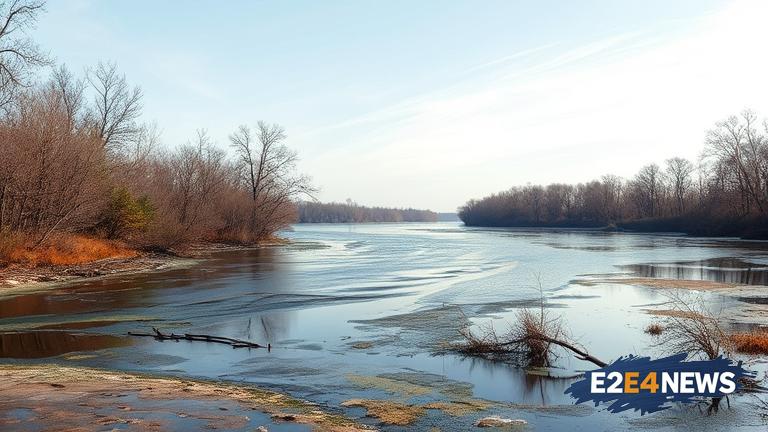The Kalamazoo River oil spill, which took place on July 26, 2010, was a devastating environmental disaster that released over 1 million gallons of crude oil into the river. The spill, caused by a ruptured pipeline owned by Enbridge Energy Partners, contaminated a 40-mile stretch of the river and affected several communities in Michigan. The disaster led to a massive cleanup effort, with thousands of workers and millions of dollars invested in the restoration of the river. Despite the efforts, the spill had a lasting impact on the environment and the local economy. The oil spill damaged the river’s ecosystem, killing thousands of fish and other aquatic animals, and contaminating the soil and groundwater. The spill also affected the local communities, with many residents forced to evacuate their homes and businesses due to the oil fumes and contamination. The cleanup effort was led by the US Environmental Protection Agency (EPA) and the Michigan Department of Environmental Quality (MDEQ), with assistance from Enbridge Energy Partners. The company agreed to pay for the cleanup and restoration of the river, as well as compensate affected residents and businesses. The spill led to changes in pipeline safety regulations and increased scrutiny of the oil industry. The Kalamazoo River oil spill was one of the largest inland oil spills in US history, and it highlighted the need for stronger regulations and safety measures to prevent such disasters. The spill also raised concerns about the impact of oil spills on the environment and public health. In the years following the spill, there have been numerous studies and reports on the environmental and health impacts of the disaster. The studies have shown that the spill had a significant impact on the river’s ecosystem, including the death of thousands of fish and other aquatic animals. The spill also contaminated the soil and groundwater, posing a risk to human health. The local communities affected by the spill have continued to feel the impacts, with many residents still experiencing health problems and economic hardship. The Kalamazoo River oil spill was a wake-up call for the oil industry and regulators, highlighting the need for stronger safety measures and more effective emergency response plans. The disaster led to changes in pipeline safety regulations, including the requirement for more frequent inspections and the use of more advanced technology to detect leaks. The spill also led to increased scrutiny of the oil industry, with more emphasis on environmental sustainability and public safety. In the 15 years since the spill, there have been significant advances in oil spill response and restoration technologies. The use of more advanced technologies, such as drones and satellite imaging, has improved the ability to detect and respond to oil spills. The development of more effective cleanup methods, such as bioremediation, has also improved the ability to restore damaged ecosystems. Despite the progress, the Kalamazoo River oil spill remains a significant environmental disaster, and it serves as a reminder of the need for continued vigilance and investment in pipeline safety and environmental protection. The spill has also led to increased awareness and activism on environmental issues, with many organizations and individuals working to promote sustainability and protect the environment. The Kalamazoo River oil spill was a devastating disaster that had a lasting impact on the environment and local communities. It highlighted the need for stronger regulations and safety measures to prevent such disasters, and it led to changes in pipeline safety regulations and increased scrutiny of the oil industry. The disaster also raised concerns about the impact of oil spills on the environment and public health, and it led to increased awareness and activism on environmental issues.
